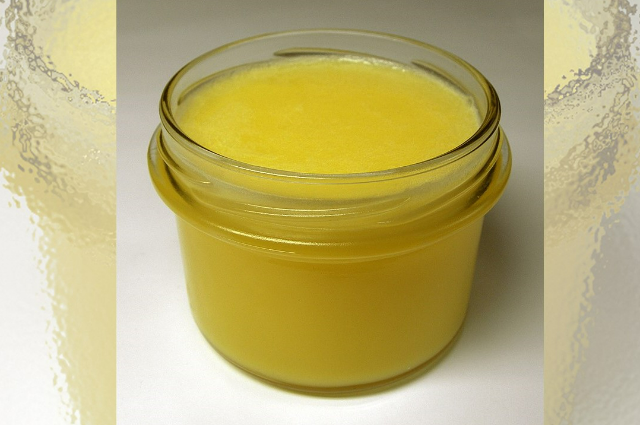
"To make the topic more interesting, here I begin with our ancient heroes who first discovered butter, probably by accident while hauling milk around in skin bags in central Asia. Ghee now released itself from the debate about whether it is good cholesterol or bad cholesterol. Ghee in Ayurveda considers being sattvic (goodness). It can be used as food with a high prestige value."
Ghee, what it is?
We all know that ghee is 100% clarified butterfat obtained from cow's milk. "The word ghee stands for the meaning " to brighten /shine" which is commonly used in South Asian cuisines. similar products are produced in the middle east and Africa commonly from goat, sheep, or camel milk known as male or Arabic alsaman word. Mostly these products are manufactured made by more industrialized methods, gaining popularity in western countries.
The area towards its benefit:
In Ayurveda
proper digestion, absorption, and delivery to a target organ system are vitally important for obtaining the maximum benefit from any therapeutic formulation.
Benefits
- To balance Vata and pitta in our body (Various diseases are due to the vitiation of Vata and Pitta.
- Gives a Good complexion, voice, and memory.
- Gives Ojas (longevity of life).
In cooking
Ghee performs better than butter in high heat cooking since it has a smoke point of 450F compared to 350F for ordinary butter. Ghee can work as butter or oil in most recipes, ghee can be used for sauteing and deep frying. sweet- salty caramelized flavour and creamy texture.
Storage
Ghee's shelf life stands longer than ordinary butter, when stored in an airtight container and kept at room temperature for extended periods. Keep it in a dry cabinet, spoiled ghee has a sour smell and should be discarded.
Aroma
Cultured ghee obtained from fermented cream tastes a bit tangier, with additional flavour which makes it speechless. The aroma, taste, color, and grain structure would vary based on their local availability.
Choice of Right Ghee:
Ghee contributes unique characteristics to the appearance, texture, lubricity, and flavour. Even ghee residue is light to dark brown, which is obtained on the cloth strainer after the ghee is filtered. It can also be used for direct consumption as a speed on bread sandwiches and to prepare toffees and sweets.
Finding a good source for ghee is worth your effort some of the tips to ensure that we are buying the best quality ghee...
Adultered Ghee
Many ghee manufacturers use vanaspati or vegetable ghee in the preparation of ghee. this is not quality ghee; it is not made from butter. Even palm oil is commonly used in the adulteration of ghee. Buffalo milk ghee has twice the butterfat content of cows, this ghee is not recommended for consumption in India by ayurvedic doctors. Spiced ghee, additives in ghee can be misleading, turmeric was among the spice, which gives the ghee its bright yellow color, however, if your purpose is to add pizzaz or eggs or tofu it could be just your thing.
Steps to be considered
- Just add a teaspoon of ghee to a vessel, if ghee melts immediately and turns dark brownish it is pure.
- To check the adulteration that happened with coconut oil, melt ghee in a glass jar using the double-boiler method and pour it into the glass jar, keep it in the fridge, if ghee and coconut oil will solidify in separate layers then the ghee is Adulterer.
- Put some ghee in your palm if it melts immediately, it is pure.
- Just adds iodine solution in a small quantity of melted ghee, if the brown iodine solution turns purple then the ghee is Adultered.
Final Words
- Since ghee is a rich source of unsaturated fatty acid which helps to lower cholesterol, Excess ghee can cause indigestion and diarrhoea. Since Ghee is a portion of heavy food for our body.
- Never take Ghee with honey; it is not good for your body.
